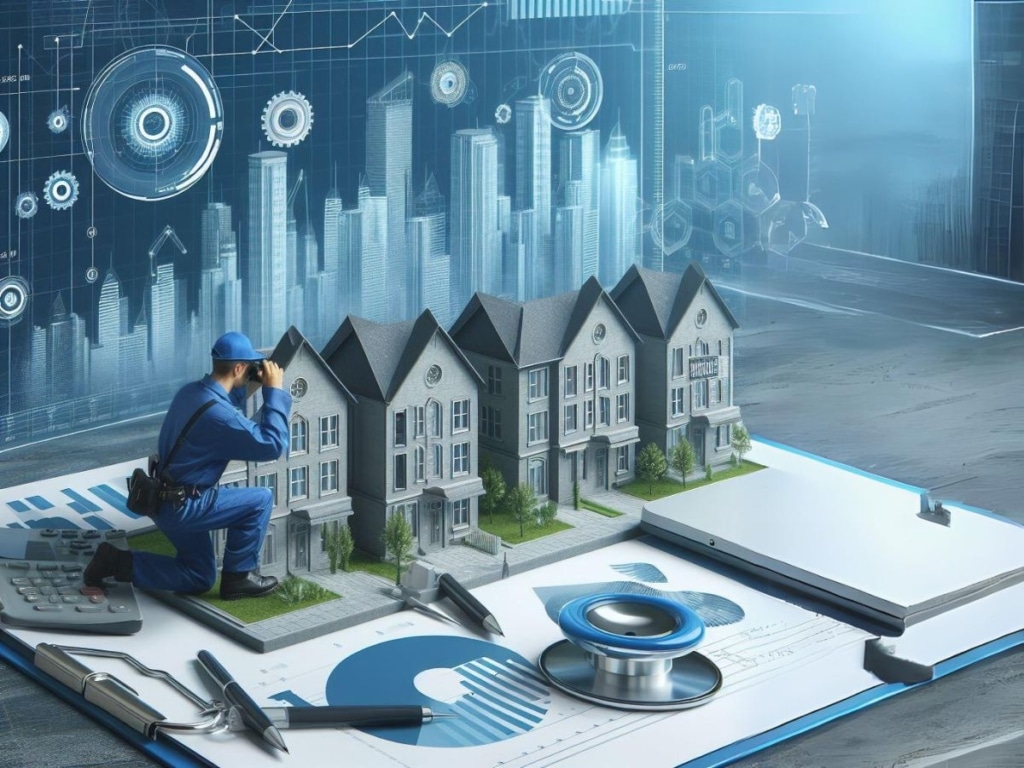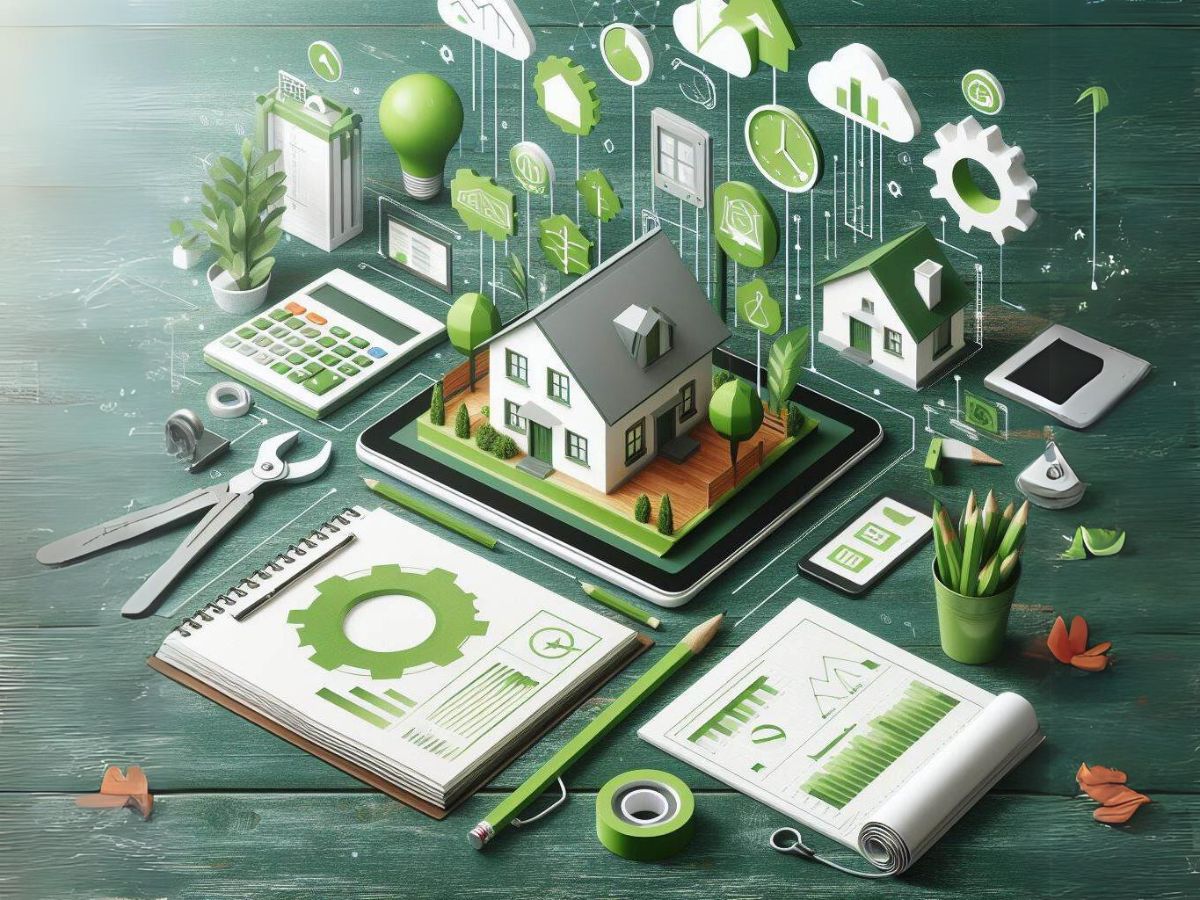Property maintenance is a vital part of property management, as it contributes to maintaining its value and attractiveness, and ensuring the comfort of tenants or owners. As maintenance becomes increasingly important, developing an effective maintenance program is crucial to ensuring sustainable performance and low costs for your properties. In this article, we will review important tips and instructions for preparing and implementing effective property maintenance programs.
Assessment of needs and priorities:
Assessing needs and setting priorities is a critical step in preparing an effective property maintenance program. Here are some important steps that can be taken in this context:
A comprehensive inspection of the property: You must first conduct a comprehensive inspection of the property to determine its current condition. This includes an inspection of the structural, electrical and plumbing systems, security measures, and any other issues that may affect the safety and quality of the property. As for identifying current and potential problems: based on the results of the examination. Current problems with the property need to be identified, as well as potential problems that may arise in the future based on risk assessments and previous use of the property.
Priority analysis: After identifying problems, they should be analyzed to determine priorities. Consideration should be given to matters that require immediate treatment due to their impact on the safety and quality of the drug. In addition to identifying problems that can be postponed or dealt with at a later time. Also develop a periodic maintenance plan based on the previous analysis. A periodic maintenance plan must be developed that specifies the procedures required to address problems and the timelines for their implementation. This includes defining the types of maintenance (preventive, corrective, cosmetic) and identifying the resources required to carry out the maintenance. And also resource allocation: Based on the required plan, the necessary resources must be allocated to implement the maintenance program. Including skilled labor, necessary materials, and necessary equipment.
Establish a regular maintenance plan:
Establishing a regular maintenance plan is an essential step in effective property management. This step ensures that the safety and quality of the property is maintained in the long term and reduces emergency maintenance costs. Here are some tips for creating an effective regular maintenance plan:
Determine the types of maintenance: The types of maintenance required must be determined, including preventive maintenance to keep the property in good condition, corrective maintenance to fix any existing problems, and cosmetic maintenance to improve the appearance of the property. In addition to a maintenance schedule: A schedule must be set to implement each type of maintenance. This schedule should be based on the needs and requirements of each individual property.
Determine the necessary resources: The human and material resources necessary to implement the plan must be identified, including skilled labor, materials and equipment required for maintenance. Also carry out maintenance regularly: Maintenance must be carried out according to the specified schedule, while monitoring the quality of work and ensuring the use of high-quality materials.
Choosing reliable contractors and suppliers:
Choosing reliable contractors and suppliers is a vital part of successfully implementing a maintenance program. Here are some tips for choosing contractors and suppliers effectively: First, research and compare: Conduct research on several contractors and suppliers and compare them based on their experience. Their commercial history, and reviews of previous customers.
Second, credibility and reputation: Verify the credibility and reputation of contractors and suppliers by reading reviews of previous customers and inquiring about them in the local market. As well as experience and skill: Make sure that contractors and suppliers have the experience and skill necessary to carry out work with high quality and on time.
Third, cost and estimates: Request detailed estimates from contractors and suppliers and compare them based on quality and cost. And also compatibility with your needs: Make sure that contractors and suppliers have the resources and skills necessary to meet your specific needs and the technical requirements of the property. Finally, legal contracts: Document all agreements with formal contracts that specify obligations, responsibilities, timelines, and payment terms.
You can learn more about monitoring and evaluation standards to ensure the quality of services in maintaining and operating real estate

Use of technology and smart systems:
The use of technology and smart systems enhances the efficiency of property maintenance management and facilitates the organization and monitoring process. Here are some of the benefits these technologies offer:
Increased efficiency: Building management systems and smart applications provide effective means to track maintenance schedule and manage tasks centrally. Which reduces the time and effort spent on managing operations. Additionally, enhancing communication is crucial. Mobile applications and smart systems facilitate direct communication between users and maintenance teams, enabling quick and easy report submissions. Which helps solve problems faster.
Cost saving is achievable through intelligent maintenance systems. These systems optimize resource usage and prevent unnecessary expenses by effectively prioritizing and organizing work. Also increasing transparency: smart technologies make it easier to track and record all activities and maintenance performed. This ensures greater transparency in maintenance operations and related reports.
Monitor and evaluate performance:
Monitoring and evaluating the performance of the maintenance program is essential to ensure efficient and effective business continuity. Here are some key steps in this context:
Firstly, collect data on maintenance program performance. This includes gathering information on reports received, response times, task completion rates, and incurred costs. Secondly, the collected data is analyzed and evaluated to assess the maintenance program’s performance. This helps in identifying strengths, weaknesses, and areas for improvement. Efficiency and effectiveness in achieving established maintenance objectives are evaluated.
Secondly, identifying corrective actions: Based on the analysis and evaluation, the corrective actions necessary to improve the performance of the maintenance program are determined. These actions could include changes in processes, training, or better use of technology. Also implementing improvements: After corrective actions are identified, they are implemented effectively according to the specified plan. The implementation of these improvements must be monitored and ensured that they are implemented correctly. In addition to continuous monitoring and evaluation: the performance of the maintenance program must be monitored regularly and the results achieved after implementing improvements must be evaluated. This process is repeated periodically in order to ensure continuous improvement in maintenance performance.
Improve communication and communication:
Enhancing communication between the maintenance team and owners or tenants is crucial. It ensures the delivery of high-quality maintenance services and effective fulfillment of property needs. In this context, the following steps can be implemented to improve communication and communication:
Establish multiple communication channels: Multiple communication channels must be provided. For example, phone, email, text messages, and dedicated applications in order to submit complaints and requests to the maintenance team. Providing excellent technical support: The maintenance team should be trained to provide excellent technical support and solve problems effectively. This is done by providing correct information and quick solutions to problems.
Use of technology: Technology can be used to facilitate communication processes. For instance, employing online maintenance management systems enables owners or tenants to submit complaints and monitor operational progress. Also listen to feedback: The maintenance team must be prepared to receive feedback and comments from owners or tenants. And also take the necessary actions to improve the service based on these feedback.
You may also want to know more about our real estate services.
Conclusion
Finally, Property management requires clear and effective communication between the maintenance team and owners or tenants. By establishing multiple communication channels, providing excellent technical support, and using technology. Effective communication can be achieved that contributes to improving service quality and customer satisfaction. Real estate management is continual. By prioritizing communication and consistent customer interaction, you can yield positive outcomes and forge enduring relationships with tenants or owners.




